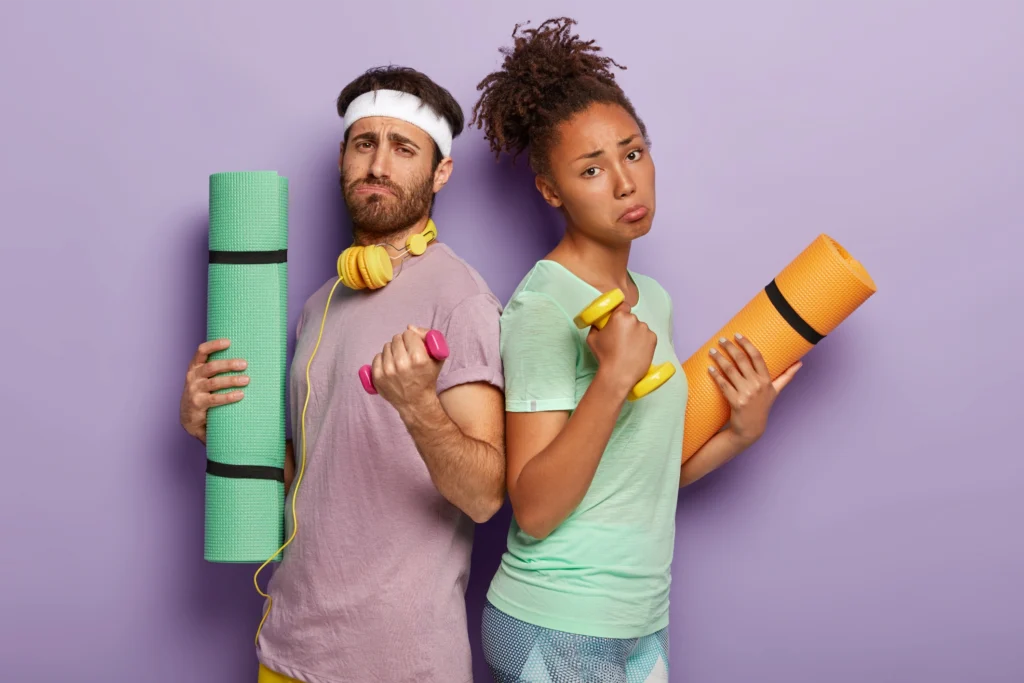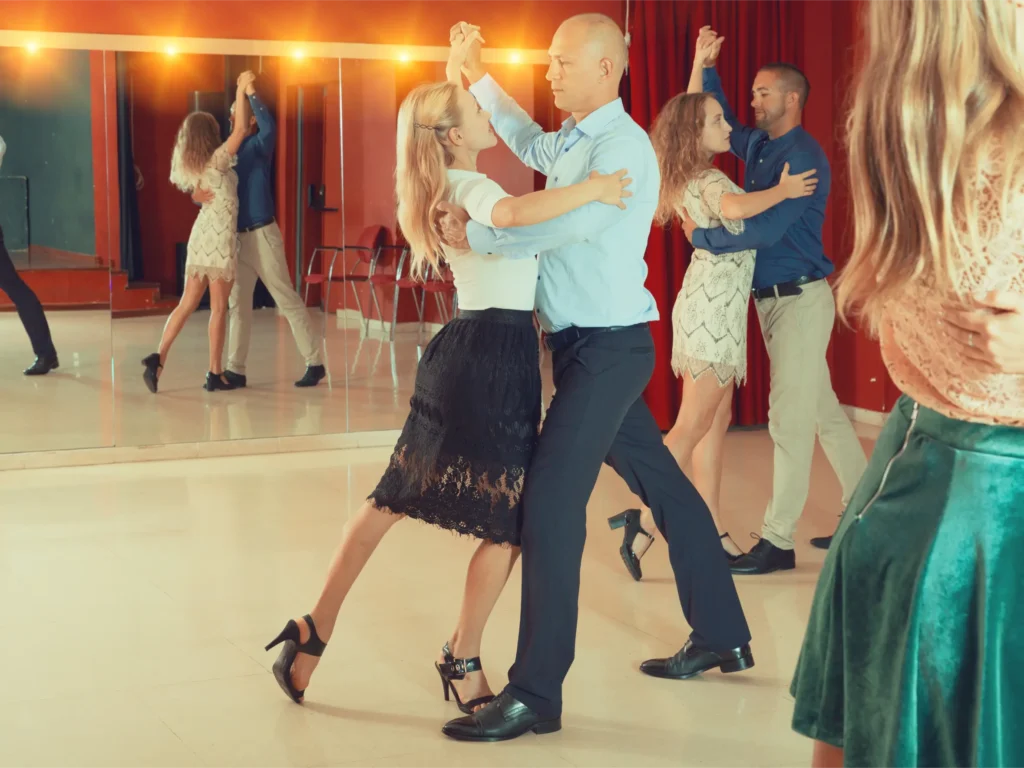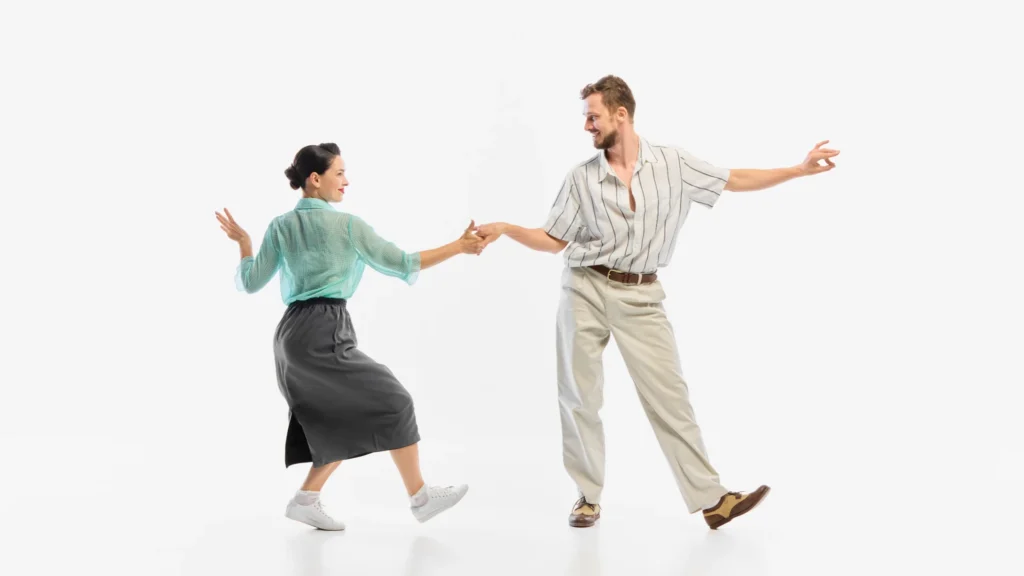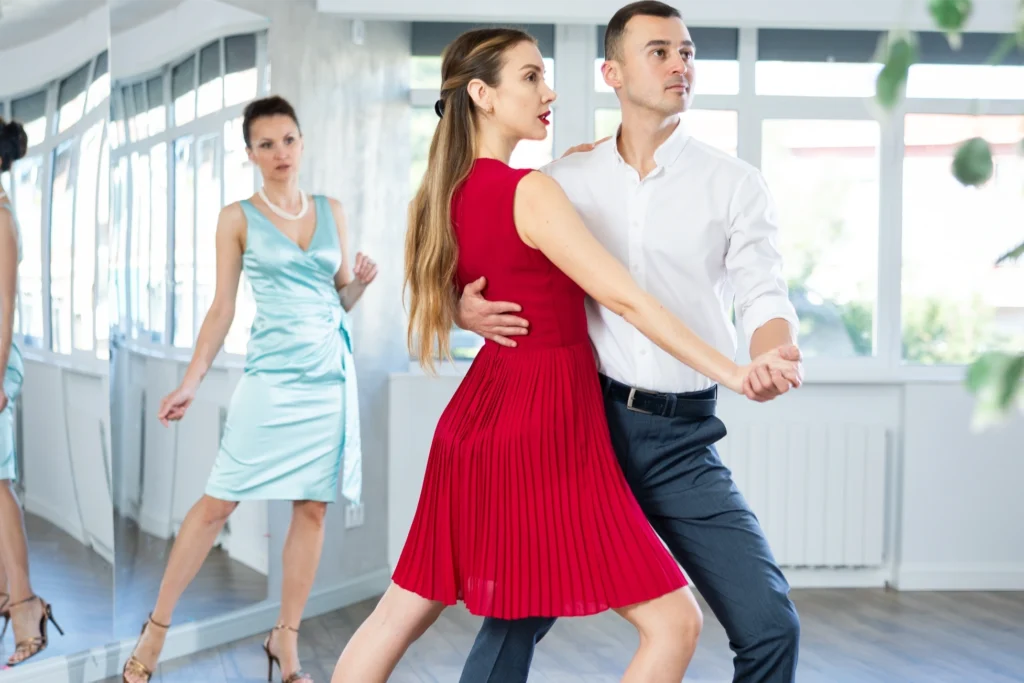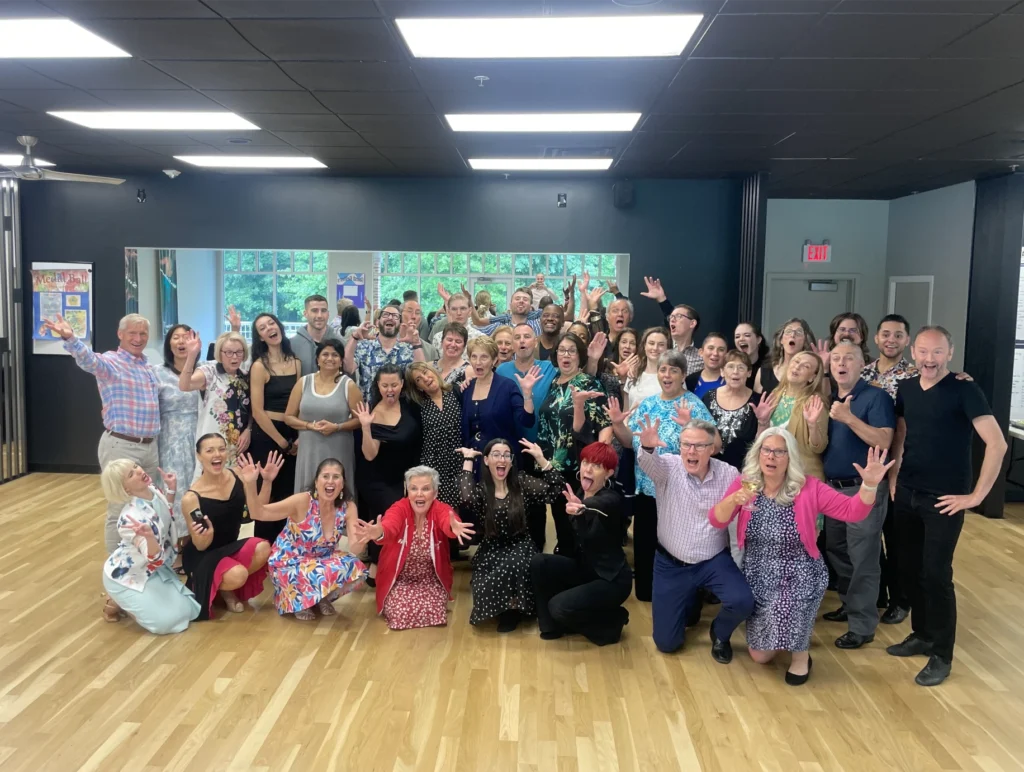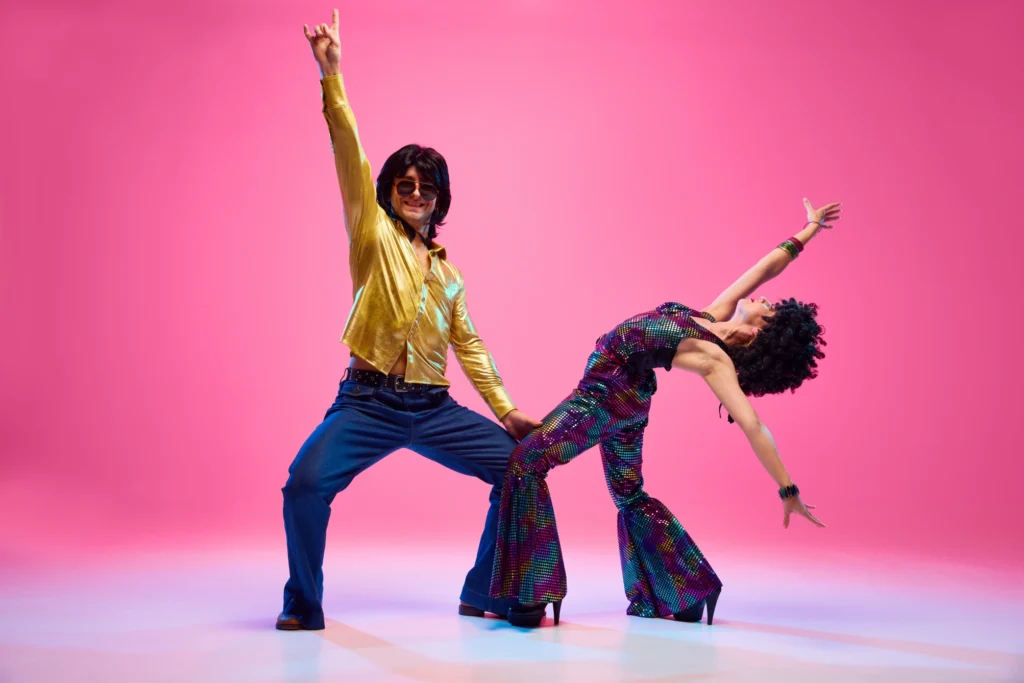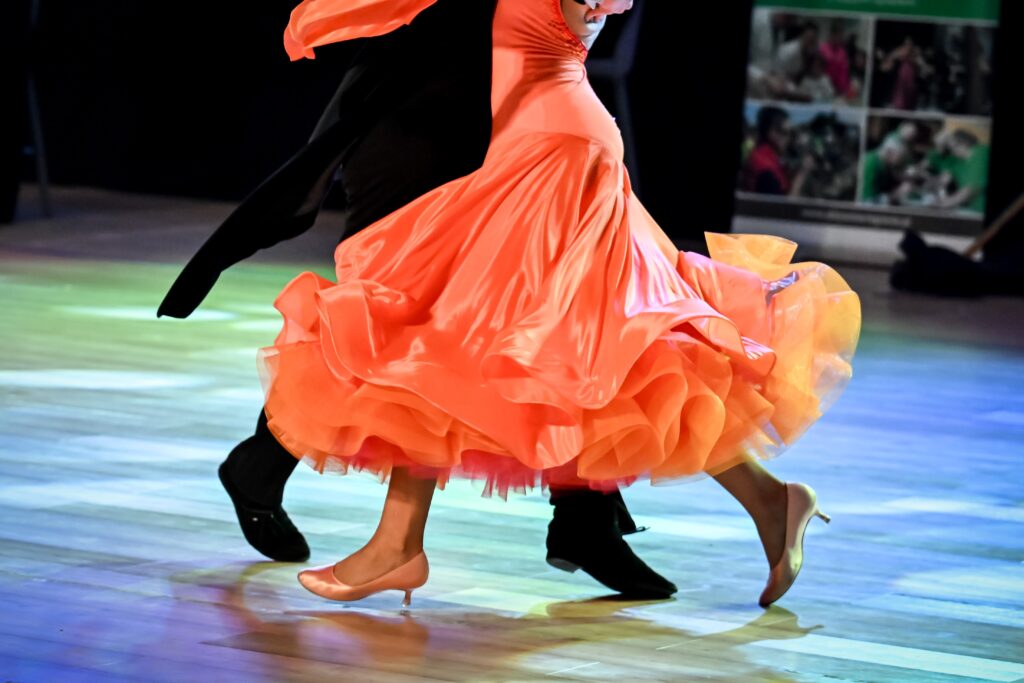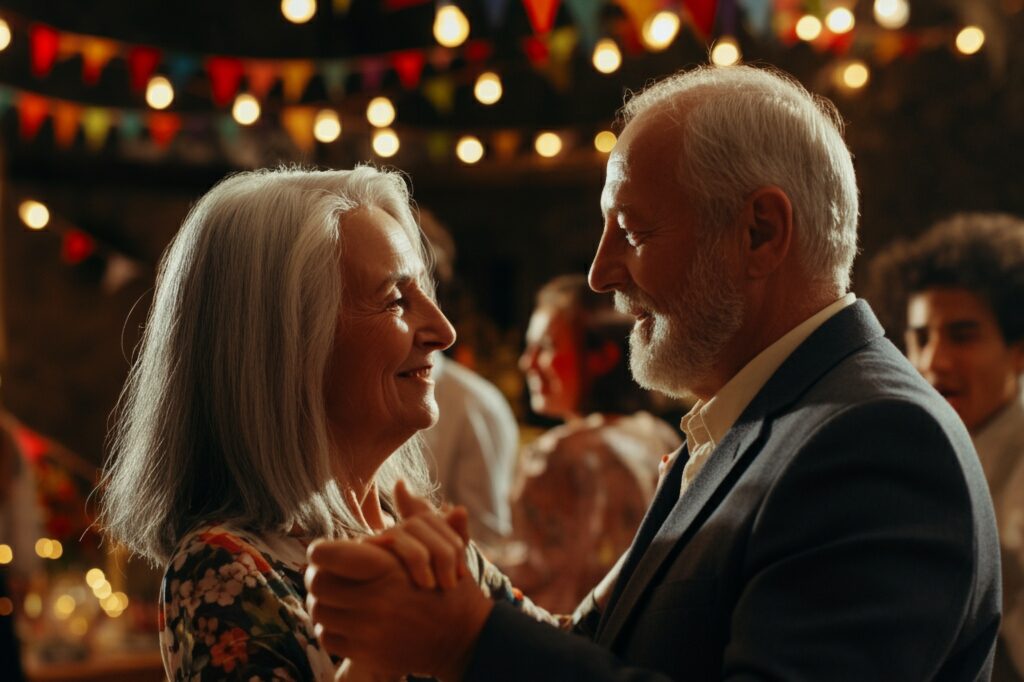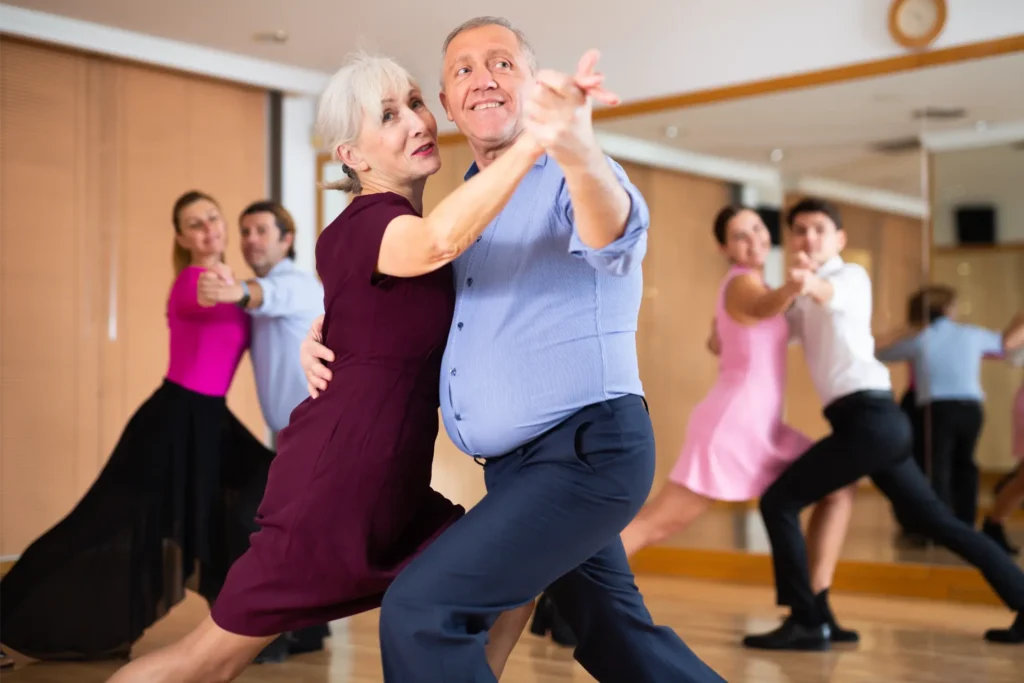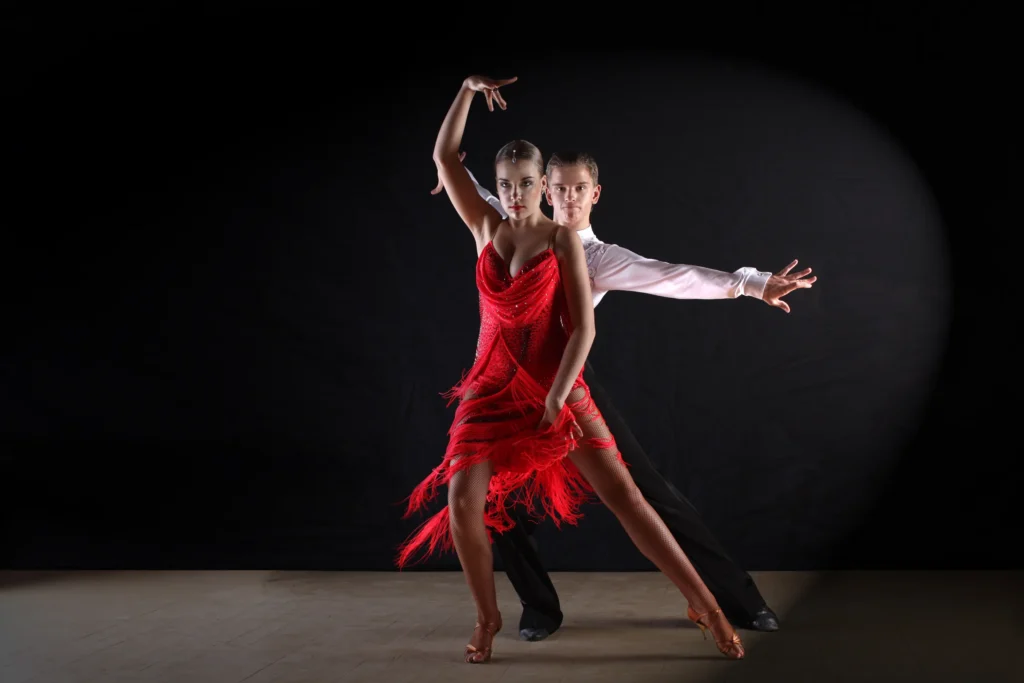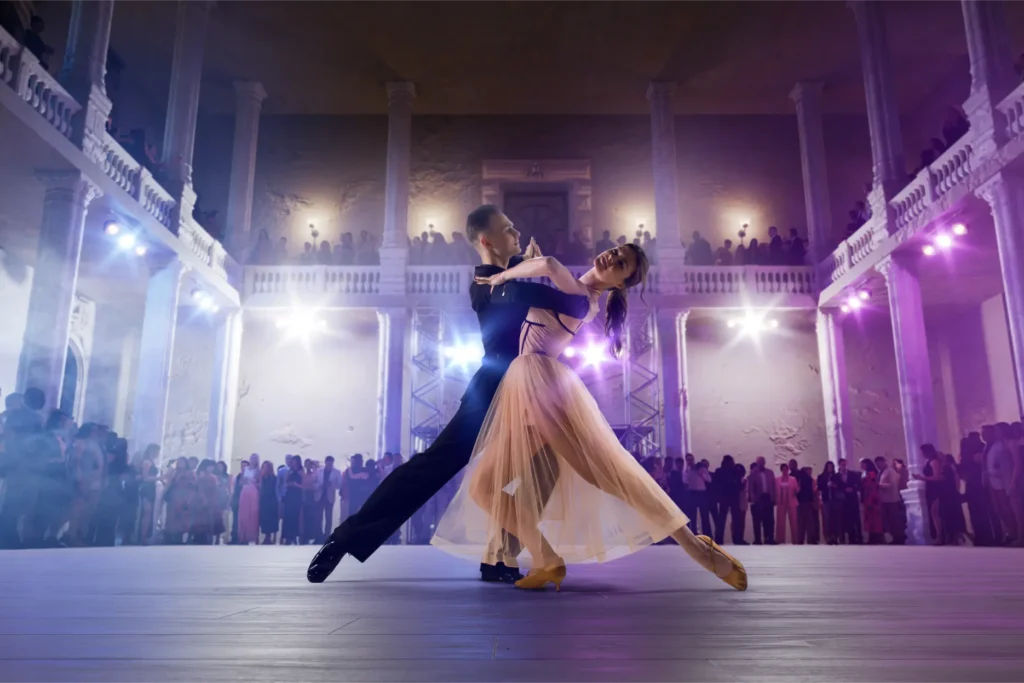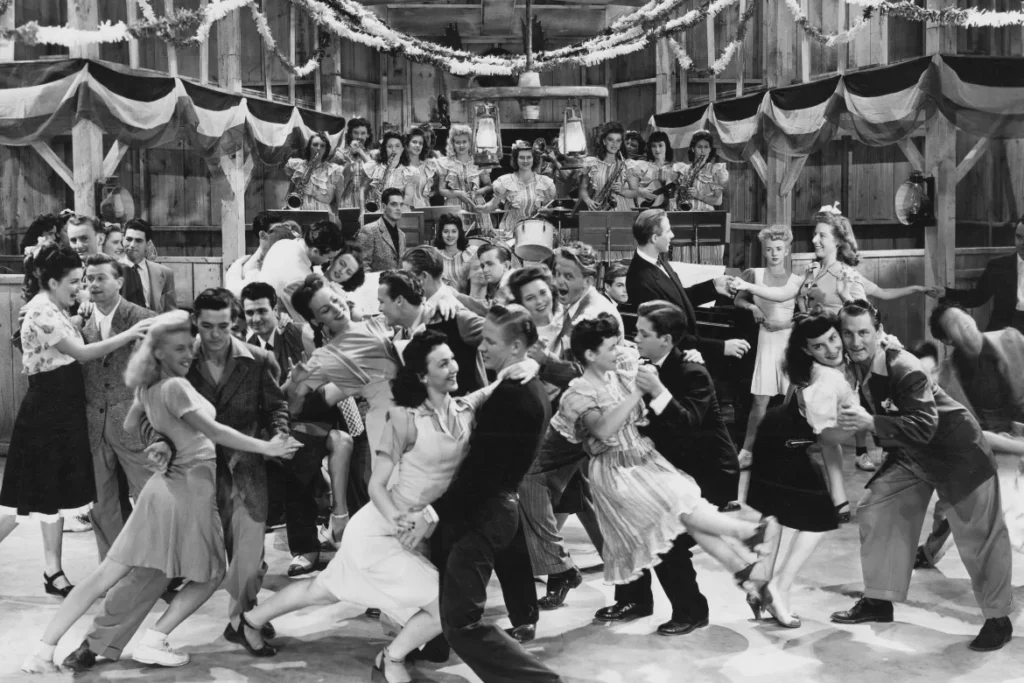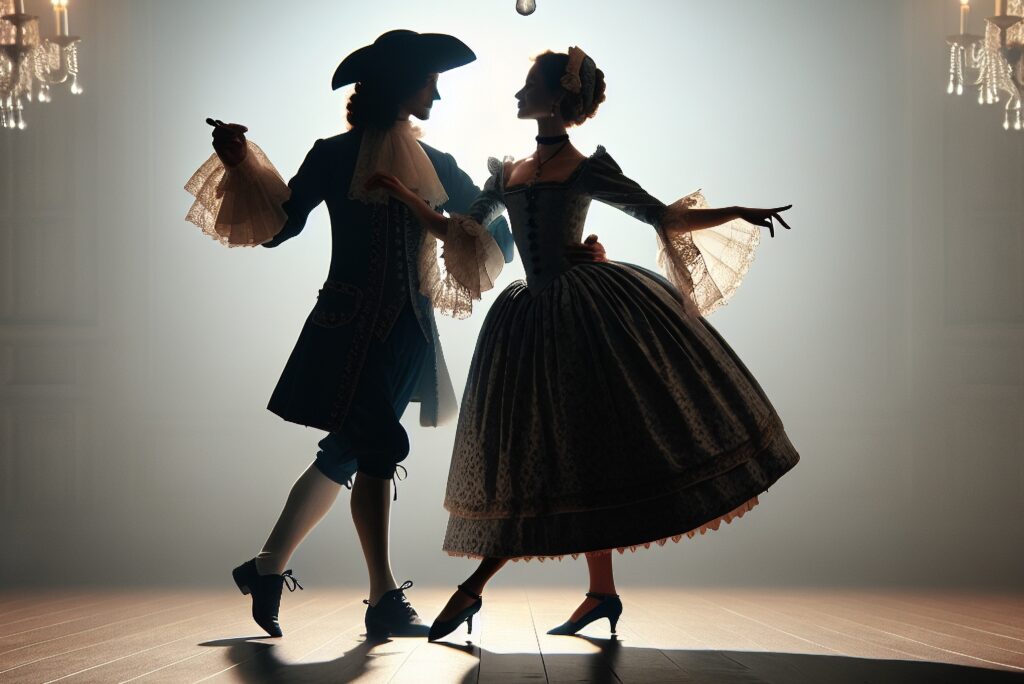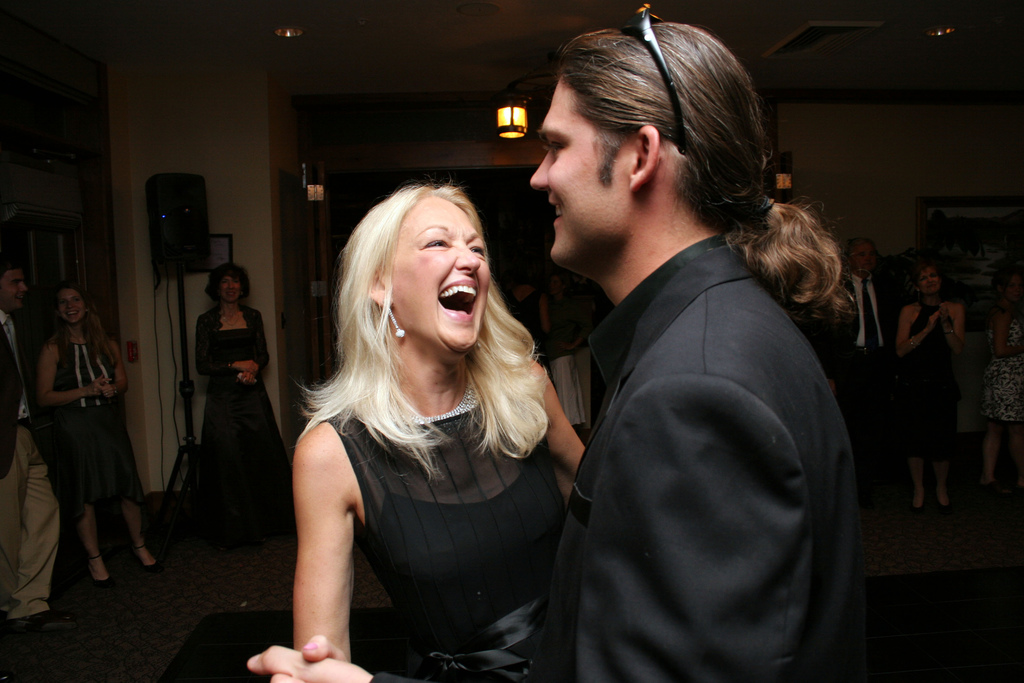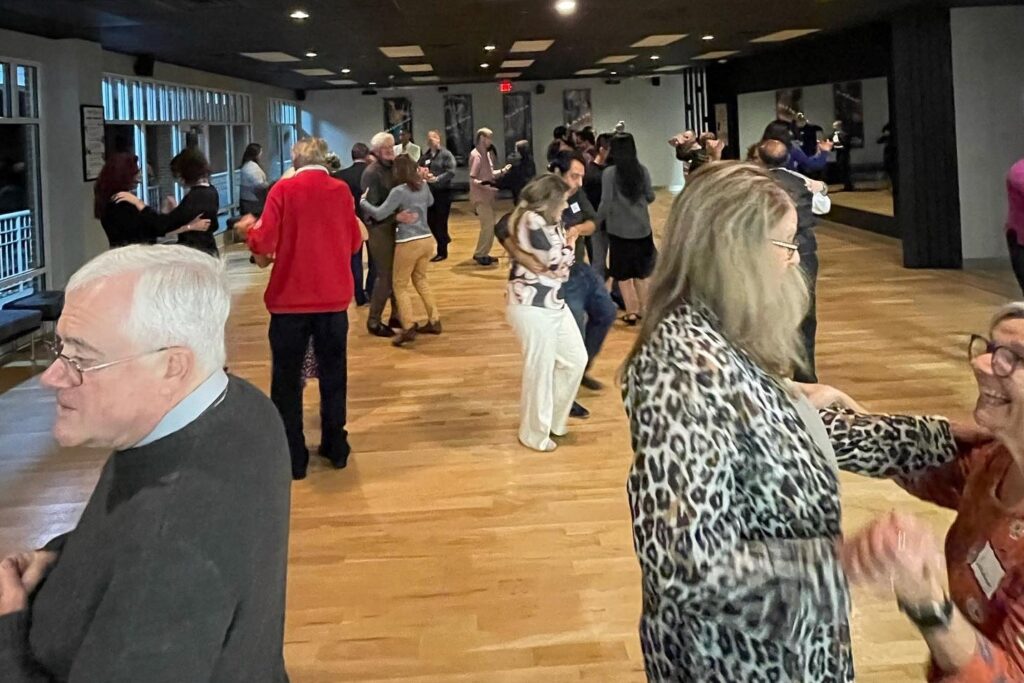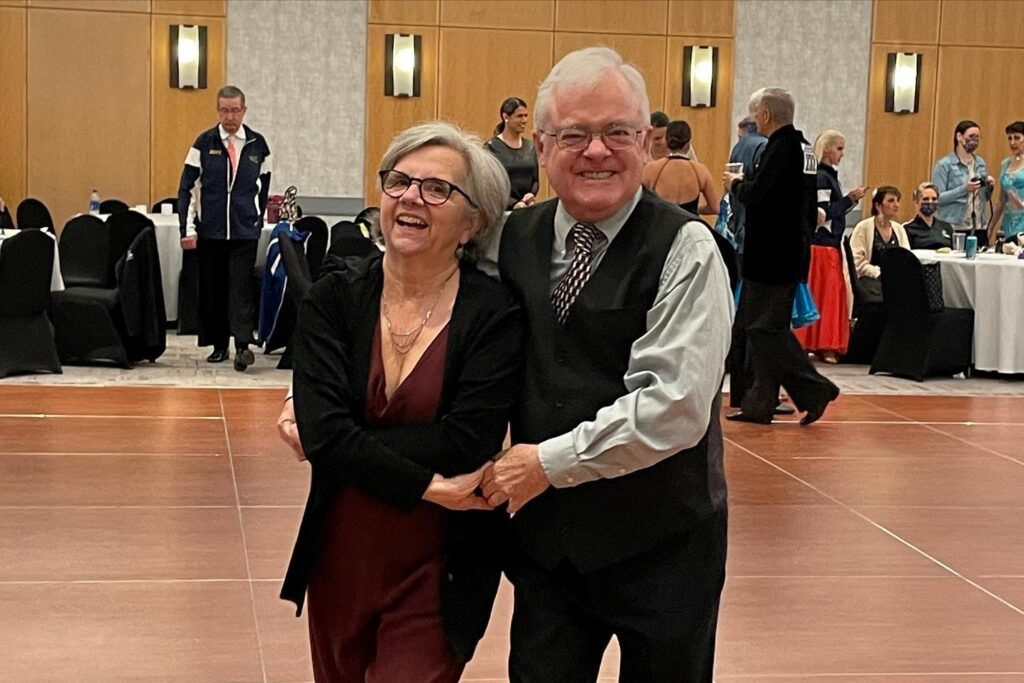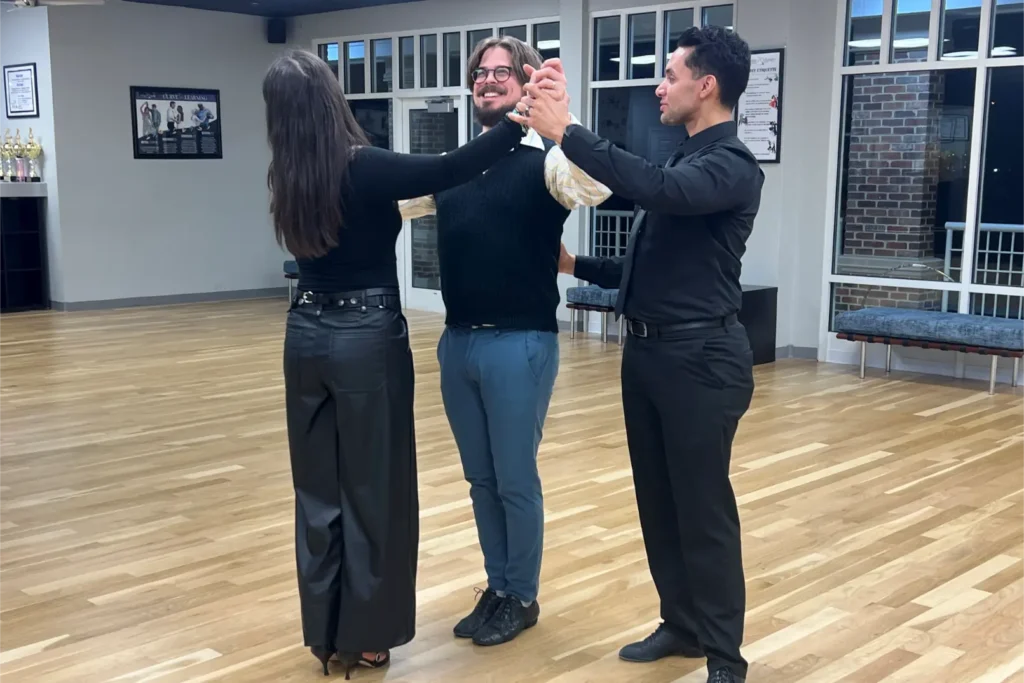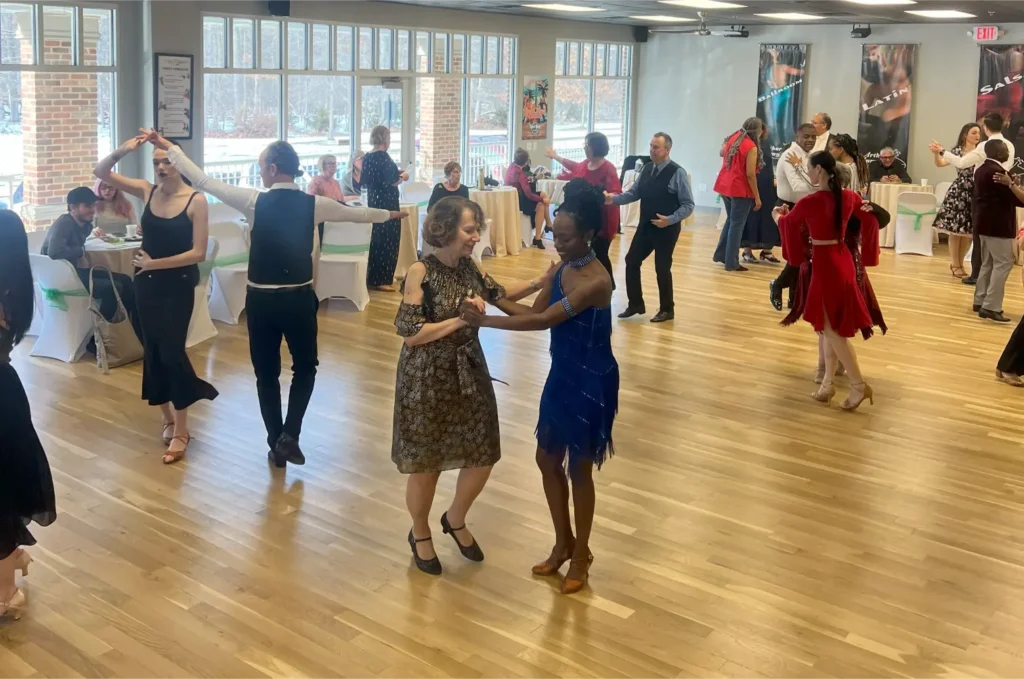Ballroom dancing isn’t just about gliding across the floor in a fancy outfit, it’s a powerful way to boost your health, improve your mood, and stay in shape. From enhancing cardiovascular endurance to sharpening your mind, the health benefits of ballroom dancing extend far beyond the dance floor. Unlike repetitive gym workouts, ballroom offers variety, creativity, and personal expression, keeping you motivated and engaged. Plus, it’s a great conversation starter and a fun way to meet new people.
The Full-Body Magic of a Ballroom Dance Workout
While ballroom dancing may seem graceful and light, it’s actually a serious workout in disguise. A ballroom dance workout activates muscles you didn’t even know you had while keeping your heart rate elevated throughout the session. Each dance style offers a different tempo and movement range, so whether you’re moving through the passionate tango or the high-energy swing, you’re giving your body a complete workout. Ballroom combines aerobic and anaerobic movements, making it a unique blend of endurance and strength training. It’s a surprisingly efficient way to meet your weekly physical activity goals without ever setting foot on a treadmill.
Cardiovascular Endurance and Heart Health
Engaging in sustained, rhythmic movement improves your cardiovascular system. Ballroom styles like the Viennese waltz, Merengue, and Cha cha can increase heart rate to a level comparable with moderate-intensity aerobic exercise. This means regular ballroom sessions help lower blood pressure, reduce bad cholesterol, and decrease your risk of heart disease. Over time, this leads to more efficient oxygen use in the body, enhanced stamina, and reduced fatigue. Even short 30-minute sessions performed three times a week have shown measurable improvements in heart health. It’s a win-win for your heart and your soul.
Muscular Strength and Tone
Ballroom strengthens both large and small muscle groups, especially in the legs, glutes, and core. Movements like lunges, squats, pivots, and lifts engage your muscles in complex ways. Partner dancing requires dynamic resistance, especially in dances like rumba and salsa, where holding postures and executing turns demands control. The upper body also benefits, particularly when maintaining frame or leading with the arms and shoulders. Over time, consistent dancing develops lean muscle, tones the body, and enhances endurance.
Coordination and Balance
Ballroom demands that you be constantly aware of your body and your partner’s movement. This heightened awareness sharpens reflexes and improves your ability to maintain balance in motion. As you shift weight between steps and synchronize with music and your partner, your coordination is challenged in a functional, full-body way. This has real-world carryover, helping people, especially older adults, reduce the risk of falls and maintain independence. Better balance also means improved posture and reduced back and joint pain.
The Physical Benefits of Ballroom Dancing Are Backed by Science
Whether you’re aiming to lose weight, tone your body, or simply feel more energized, the physical benefits of ballroom dancing are undeniable. In fact, there are 5 key benefits of ballroom dancing lessons that make it such a powerful wellness activity.
A growing body of research supports dance as a therapeutic tool for managing chronic conditions like obesity, arthritis, and osteoporosis. Dancing also encourages consistent movement and better hydration habits, both of which contribute to overall wellness.
Calorie Burning and Weight Management
Depending on the style and effort, ballroom can burn 200–400 calories in a half-hour. Faster dances like swing and mambo burn even more. Regular sessions can assist with weight management when paired with healthy eating. Unlike other forms of cardio, it doesn’t feel like a chore—it feels like fun.
Improved Joint Health
Thanks to its low-impact nature, ballroom dancing is ideal for joint mobility. It strengthens the muscles around joints, improving stability and reducing inflammation. Many people with arthritis find relief and improved mobility through gentle dancing, especially in smoother dances like foxtrot and rumba.
Better Posture and Alignment
Maintaining frame in ballroom requires upright posture and spinal awareness. Over time, this retrains your body to stand taller and move more efficiently. It also reduces chronic tension in the shoulders and neck, making dancers look—and feel—more confident in everyday life.
Mental and Emotional Ballroom Dancing Fitness Benefits
The ballroom dancing fitness benefits aren’t just physical—they’re profoundly mental and emotional. The combination of movement, music, and human connection creates a powerful antidote to modern stress. Dance has even been studied as an effective therapy for depression, anxiety, and PTSD. In fact, many dancers report a sense of flow and mindfulness that’s hard to replicate elsewhere.
Cognitive Sharpness
Dancing is one of the few physical activities that activates both hemispheres of the brain. Learning steps, remembering sequences, and adjusting to your partner improves memory and problem-solving. It’s also associated with a lower risk of cognitive decline, with long-term dancers showing increased gray matter in areas linked to spatial memory and executive function.
Mood Enhancement and Stress Reduction
Ballroom dancing is a natural mood booster. It stimulates dopamine and serotonin production, promoting a sense of joy and emotional release. The physical movement helps decrease cortisol levels (the stress hormone), while the musical and social elements add an extra layer of relaxation and fun.
Social Connectivity
Humans are wired for connection, and ballroom provides a structured yet playful way to interact. Dancing teaches cooperation, non-verbal communication, and patience. This social aspect is particularly helpful for those who are shy or isolated, helping build self-esteem and social networks.
Why Ballroom Dancing Is the Perfect Exercise for All Ages
Ballroom is adaptable for everyone. It can be gentle and slow-paced for beginners or seniors, or dynamic and athletic for advanced dancers. It grows with you, offering challenges at every level without requiring expensive equipment or a gym membership.
Safe for Beginners and Seniors
Older adults often find ballroom dancing to be one of the safest ways to stay active. Movements can be modified for limited mobility, and the cognitive aspect helps maintain sharpness. Even chair-based ballroom movements have been introduced in some therapeutic settings.
Engaging for Younger Participants
Younger dancers often enjoy ballroom for its mix of technique, competition, and expression. Youth programs often incorporate elements of music, acting, and storytelling, adding fun layers to fitness.
Couples and Individual Benefits
Ballroom is ideal for romantic bonding, but you don’t need a partner to enjoy the ballroom dance health benefits. Many dancers start solo and find friendships and community in group settings. It’s a great way to build confidence and enjoy a healthy physical connection in a respectful environment.
Your Health’s Grand Finale: Dancing Towards a Brighter Future!
Ballroom dancing is a full-body experience that offers incredible rewards for your heart, muscles, joints, brain, and spirit. It merges fun and fitness in a way few activities can. The health benefits of ballroom dancing are both immediate and long-term, making it one of the most joyful and sustainable ways to stay active. Whether you’re just starting or returning after a break, now is the perfect time to explore this timeless art form. Not only will you look and feel better, but you’ll gain a new appreciation for movement, music, and human connection. So lace up your dance shoes—your healthier life starts on the dance floor.
FAQ
How often should I ballroom dance to see health benefits?
Experts recommend at least 150 minutes of moderate-intensity activity per week, which can easily be met with 2–3 ballroom dance classes. You’ll start noticing benefits such as improved mood, coordination, and fitness within just a few weeks.
Can I use ballroom dancing for weight loss?
Absolutely. With consistent practice and proper nutrition, a ballroom dance workout can be part of an effective weight-loss plan. The key is intensity, frequency, and choosing styles that keep your heart rate elevated.
Is ballroom dancing suitable for people with no dance experience?
Yes! Beginners are welcome in most studios, and many ballroom dance exercises are taught in progressive classes to match your skill level. Instructors are trained to work with all ages and abilities.
What should I wear to a ballroom class?
Comfortable clothing that allows freedom of movement is essential. Dance shoes are ideal for support and floor traction, but beginners can start with clean, closed-toe shoes with low heels or smooth soles.
Do I need a partner to get started?
Not at all! We offer individual instruction and suggest rotating partners in group class and socials, even for couples.

